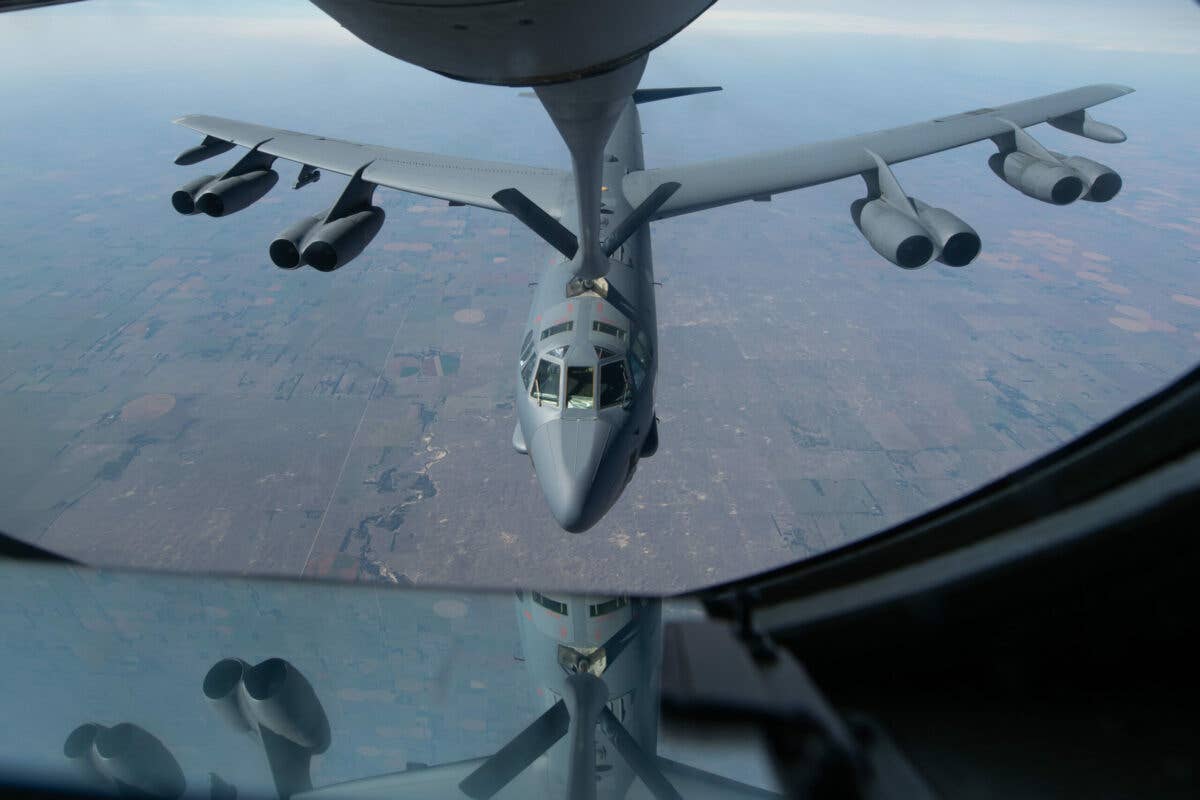USAF Tests Reach of KC-135s in 72-Hour Endurance Mission
During the endurance event, the two Stratotankers flew more than 36,000 miles, refueling B-2 Spirits, B-52 Stratofortresses, an E-3 Sentry and an E-6B Mercury.

A KC-135 Stratotanker from Fairchild Air Force Base, Wash. refuels a B-52 Stratofortess during a 72-hour endurance mission. [Courtesy: U.S. Air Force]
Aircrews of two KC-135s Stratotankers, one of the Air Force's most iconic aircraft, now have a reputation for also having some of the highest stamina in the service after the aircraft recently conducted 72-hour single-aircraft endurance missions.
During the endurance event—a first for the aircraft—the two Stratotankers flew more than 36,000 miles, refueling B-2 Spirits, B-52 Stratofortresses, an E-3 Sentry, and an E-6B Mercury. They landed only to refuel and switch crews, and service engine oil while at least one engine was running, according to the Air Force.
The exercise was a demonstration of the aircraft fleet’s ability to execute a mission over large distances and under extended conditions, the Air Force said.
The mission ran from October 4 through 7, and included crews from the 92nd Air Refueling Wing at Fairchild Air Force Base, Washington, along with crews from the 141st Air Refueling Wing, 452nd Air Mobility Wing at March Air Reserve Base, California, and 134th Air Refueling Wing at McGhee Tyson Air National Guard Base, Tennessee.
“The execution of this endurance mission is a proof of concept to support Pacific Air Force’s planning efforts and the Air Force’s focus on Persistent Mission Generation,” Col. Craig Giles, 92nd Maintenance Group commander, said in a statement. “Two aircraft performed a series of engine running crew changes and hot-pit refuels to minimize the amount of time aircraft are on the ground and maximize aircraft reliability by eliminating the need to cycle power, hydraulics, and avionics.”
Aircraft maintenance technicians also performed concurrent engine oil servicing during crew changes while an engine was left running.
"This allowed the crews to demonstrate tanker 'drop-in' concept with minimum time spent vulnerable on the ground, a strategy that is crucial to survivability in a high-end contested fight," the service said.
The Stratotanker was fielded in the late 1950s in order to extend the reach of Strategic Air Command during the Cold War. When it entered service in 1957, the KC-135 became a modernization milestone when it replaced propeller driven tankers of the post-war period.
The Air Force initially purchased 732 KC-135s, the last of which was delivered in 1965. The service currently has an inventory of 396 aircraft: 153 in active duty, 171 in Air National Guard and 72 in Air Force Reserve.

Sign-up for newsletters & special offers!
Get the latest FLYING stories & special offers delivered directly to your inbox






